Hands-on with Sifteo Cubes - this year's strangest new way to play games
Three tiny, tactile displays, one experience
Amidst a holiday onslaught of AAA blockbusters, a trio of unlikely suspects pulled our attention away from slick shooters and ambitious adventures. The Sifteo Cubes are to blame, and they're quite unlike anything we're touched before. These one-inch displays are encased in durable, kid-proof plastic, but this is one case in which the surprising form factor is decidedly less important than what these little curiosities can do. Like bite-sized iPhones, the Cubes can be tapped, tilted, and flipped to play games, but more interestingly, each can sense its proximity to other Cubes, creating unique gameplay experiences that utilize all three at once.
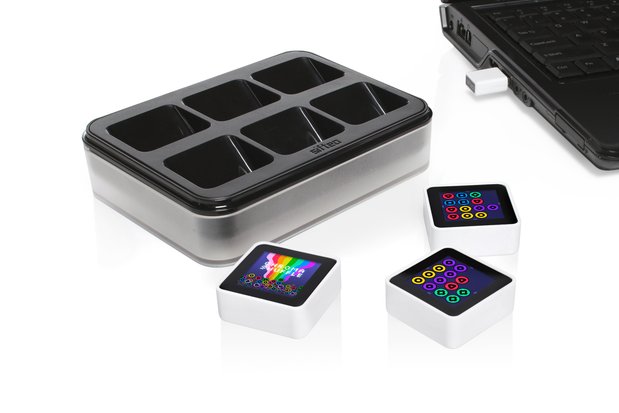
Cool, right? We thought so, which is why we got our hands on a starter set and put some of the initial apps through their paces.
How do they work?
The Sifteo Pack starter set is priced at $149, and includes three Cubes, a charging dock and cable, and a USB receiver for your PC or Mac. Additional Cubes are priced at $45 apiece, and certain games support up to six Cubes – and the dock holds up to six, as well. All are available from the Sifteo website, and each starter pack comes with puzzle demo Chroma Lite, an interactive tutorial, the Sifteo Creativity Kit app, and $5.00 (US) worth of points for use in the Sifteo store.
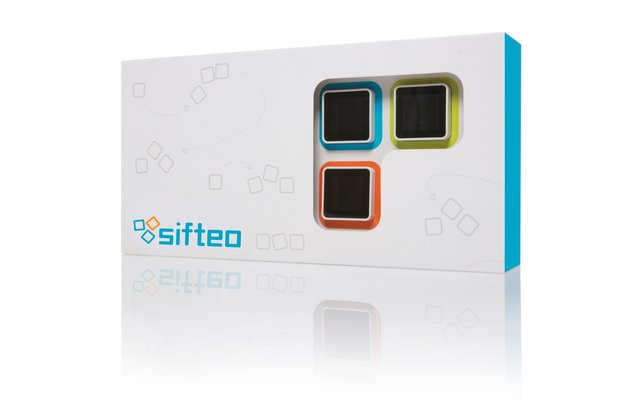
Though tiny, the Sifteo Cubes aren’t really portable devices, at least not in the way that dedicated gaming handhelds are. Instead, you'll use them in concert with a PC or Mac via the USB receiver and the free SiftRunner program. Like the iOS App Store, SiftRunner lets you download free and paid games and apps, utilizing a Nintendo-esque points system (100 points equals $1.00 USD), with most of the current releases coming in at $1-$3 apiece.
Once downloaded, you can install the apps wirelessly to any connected Cubes, and then start them within SiftRunner. Any sounds or music from the games come from your computer speakers; otherwise, all interactions from that point are directly with the Cubes, with menu selections performed by lining up icons or text blurbs on different Cubes, or flipping them over as indicated.
What's available and what's coming?
At present, the Sifteo store has about 16 games and apps to choose from, some of which are brief (and free) demo versions, while others are a bit more fully formed. It's clear from the current crop of releases that an early push has been made towards educational and simplified games for younger players, which makes perfect sense considering the Cubes' uncomplicated design. The Cogwell Twins and the Amazing Alpha-Matic, for example, is a game for pre-readers that helps them sound out letters, while Moon Marble sees you tilting and connecting the Cubes to pick up floating stars and escape light hazards.
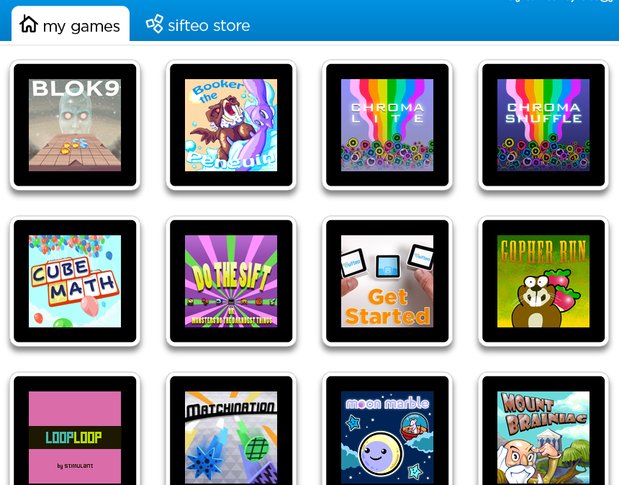
Other games scale a bit better between kids and adults, though. Booker the Penguin offers a platformer-like challenge in which you'll arrange Cubes to create a path for the titular character to find items, though escape challenges against the evil Owlbear take on a speedier pace. Blok 9 is an interesting, strategic puzzle experience in which you'll place blocks onto the playing field (by lining up Cubes and then tapping or tilting) in alternating turns, with up to four players trying to claim as many blocks as possible. And Word Play is a fun word-building game, in which you'll arrange letter-displaying Cubes to create various words, although playing it with just three Cubes (it supports up to six) is a drag. (And quite honestly, Scrabble Flash offers a similar experience with five cubes for $30 or less.)
Sign up to the GamesRadar+ Newsletter
Weekly digests, tales from the communities you love, and more
A couple games did grab us, however. Matchination serves up a variety of shapes, each with different color schemes and patterns, and tasks you with quickly clearing them from the screen. It starts simply enough, but after several rounds, you'll be spinning Cubes with constant haste to stay on top of the action. Chroma Shuffle is another standout; it's the premium version of the free Chroma Lite game that comes with the Cubes, and it similarly finds you matching up like colors to clear puzzle pieces from a board. However, you can also tilt the screen to move pieces around, and the various arcade and puzzle modes offer different experiences.
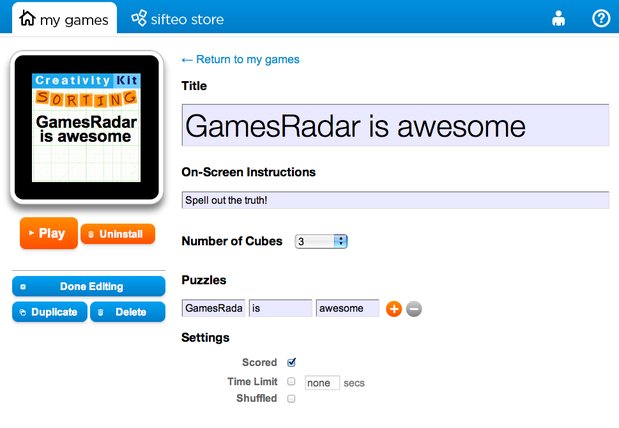
Meanwhile, the packed-in Creativity Kit lets you lightly customize a sorting puzzle game to design your own word, sentence, or math equation game. We used the Kit (via SiftRunner on the computer) to create a game in which you'd have to write "GamesRadar is awesome" on the Cubes to pass – and no, "Is GamesRadar awesome?" isn't a winning sentence. More importantly, parents and educators can use this app to make customized learning experiences for youngsters. Additionally, Sifteo recently released its SDK (software development kit), which it hopes will generate an iOS App Store-like boom. Well, probably not on that level, though we're looking forward to seeing what's in store in the months ahead.
What's the value?
If you're eyeing the Sifteo Cubes as someone who's been hardened by years of console, PC, or portable games, chances are that they're not for you – at least not at present. The current offerings lack the depth and complexity of the kinds of games we're used to, much as we're still intrigued by the hardware. But that's fine; not every game has to be for longtime videogame fans.
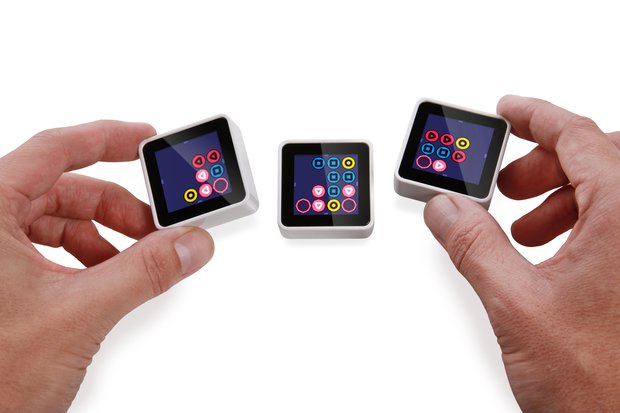
Right now, Sifteo Cubes seem best used as educational devices, whether it's in an actual classroom or for use at home. Between the Creativity Kit and some of the aforementioned apps, the Cubes can help teach spelling and math, as well as color and pattern recognition, and the tactile approach makes it incredibly easy to interact with these programs. In particular, we can see how the Cubes would be a wonderful tool for special-needs students, especially considering the ability to pick up and hold Cubes adorned with varying images, text, and symbols.
The word "potential" best describes the Sifteo Cubes experience, at least for now. The Cubes themselves feel sturdy and well designed, and between the myriad input functions, we can see how developers might push the platform in the months and years ahead. So if you have a child in your life that might enjoy or benefit from the Cubes, consider a purchase on his/her behalf – but keep an eye out on the Sifteo store over time, as the SDK may prompt developers to unleash some wildly creative experiences as the Cubes' reach expands.


